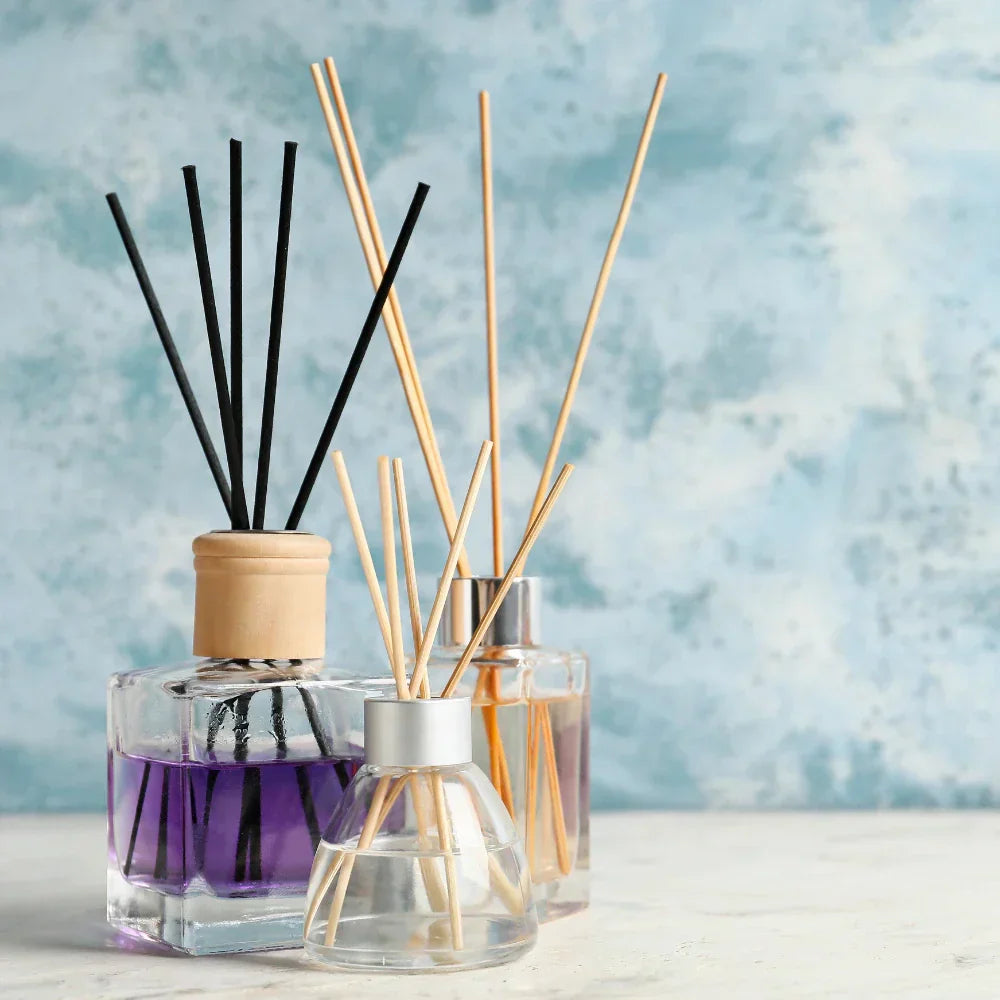
Inside Your Reed Diffuser: How Material Affects Scent Throw
Share
Natural vs Synthetic Diffuser Reeds: What's the Difference?
Reed diffusers have become a popular, flame-free way to keep homes smelling fresh. At the heart of these elegant setups are the reed sticks, which quietly wick scented oil from a vessel and release it into the air. But not all reeds are created equal. The performance of a diffuser can vary greatly depending on whether you use natural or synthetic reeds. Let’s explore the technical side of how diffuser reeds work and what separates these two types.
The Science Behind Reed Diffusers
At a basic level, reed diffusers rely on capillary action, the same process that allows plants to draw water from their roots. When a reed stick is placed into scented oil, the liquid travels upward through tiny channels in the reed. Once it reaches the exposed end, the oil evaporates and disperses into the air as a pleasant fragrance. This process happens continuously as long as there's oil in the container and the surrounding air is able to carry the scent.

Natural Reeds: The Classic Choice
Most natural diffuser reeds are made from rattan, a plant known for its fibrous structure and excellent capillary system. Rattan contains thousands of microscopic tubes that effectively draw up oil and release scent over time. This makes them ideal for use in traditional diffusers.
Natural reeds are eco-friendly, biodegradable, and have a rustic, earthy look that suits many home décor styles. However, they do have some limitations. They tend to clog over time, especially with thicker or resin-heavy oils, which slows down scent diffusion. To combat this, users often flip the reeds every few days to refresh the fragrance throw, an easy task, but one that requires maintenance.

Synthetic Reeds: The Modern Alternative
Synthetic reeds are typically made from engineered polymers or plastics and are designed to mimic or improve upon the capillary action of natural materials. Some feature precise internal structures, like hollow cores or micro-tubes, to draw and diffuse oil more evenly.
One major advantage of synthetic reeds is their consistency. Because they’re manufactured to specific standards, you get predictable performance across every stick. They're also less likely to clog, making them a better fit for blends with essential oils or heavier carriers. Many synthetic reeds don't require flipping and can even be rinsed and reused, offering more longevity over time.
However, synthetic reeds are not biodegradable, which makes them a less attractive option for environmentally conscious consumers. Aesthetically, they may also lack the charm of natural rattan, although they can be made in different colours and shapes to suit modern branding or design preferences.

Choosing the Right Reeds
If you're using a light, alcohol-based diffuser solution, both natural and synthetic reeds tend to perform well. For more viscous blends, like those using essential oils, synthetic reeds may offer better long-term performance without clogging. Natural reeds, on the other hand, are ideal for eco-conscious brands or consumers who want a traditional look and feel.
When it comes to product development or even just choosing a diffuser for your home, it can be helpful to test both types using the same oil blend. Observe the scent throw, how quickly the oil depletes, and how often the reeds need to be flipped. This will give you a practical sense of which type suits your needs best.
Both natural and synthetic reeds have their place in the world of home fragrance. Natural rattan offers strong performance with a sustainable edge, while synthetic reeds bring consistency and low-maintenance convenience. The right choice ultimately depends on your priorities, whether it's eco-friendliness, scent performance, or ease of use.
Whether you're creating a custom diffuser product or simply shopping for your next home scent, understanding the differences between these reeds can help you get the most out of your aromatic experience.
